The Bellevue Collection started as an open-air strip center and evolved with the industry into a super-regional mall and now a mixed-use complex with top-tier retail tenants. Along the way, its owners took steps other centers still are racing to achieve: backfilling department stores, mixing uses, emphasizing restaurants, implementing streetfront retail, creating gathering spaces and making it all walkable.
Beginnings: 1940s to 1960s
Kemper Freeman Jr. was just 5 years old in 1946 when his father built a shopping center on a patch of land in Bellevue, Washington. “I’m turning 80 here this month,” said the billionaire developer and former ICSC chairman. “I’ve either been watching that center or working on it, trying to make it better, for the past 75 years.”
What started as a suburban strip mall grew into one of the most profitable downtown developments in the U.S. marketplaces industry. Now in its 75th year, the 5.5 million-square-foot Bellevue Collection is comprised of super-regional mall Bellevue Square, as well as mixed-use Bellevue Place and Lincoln Square.
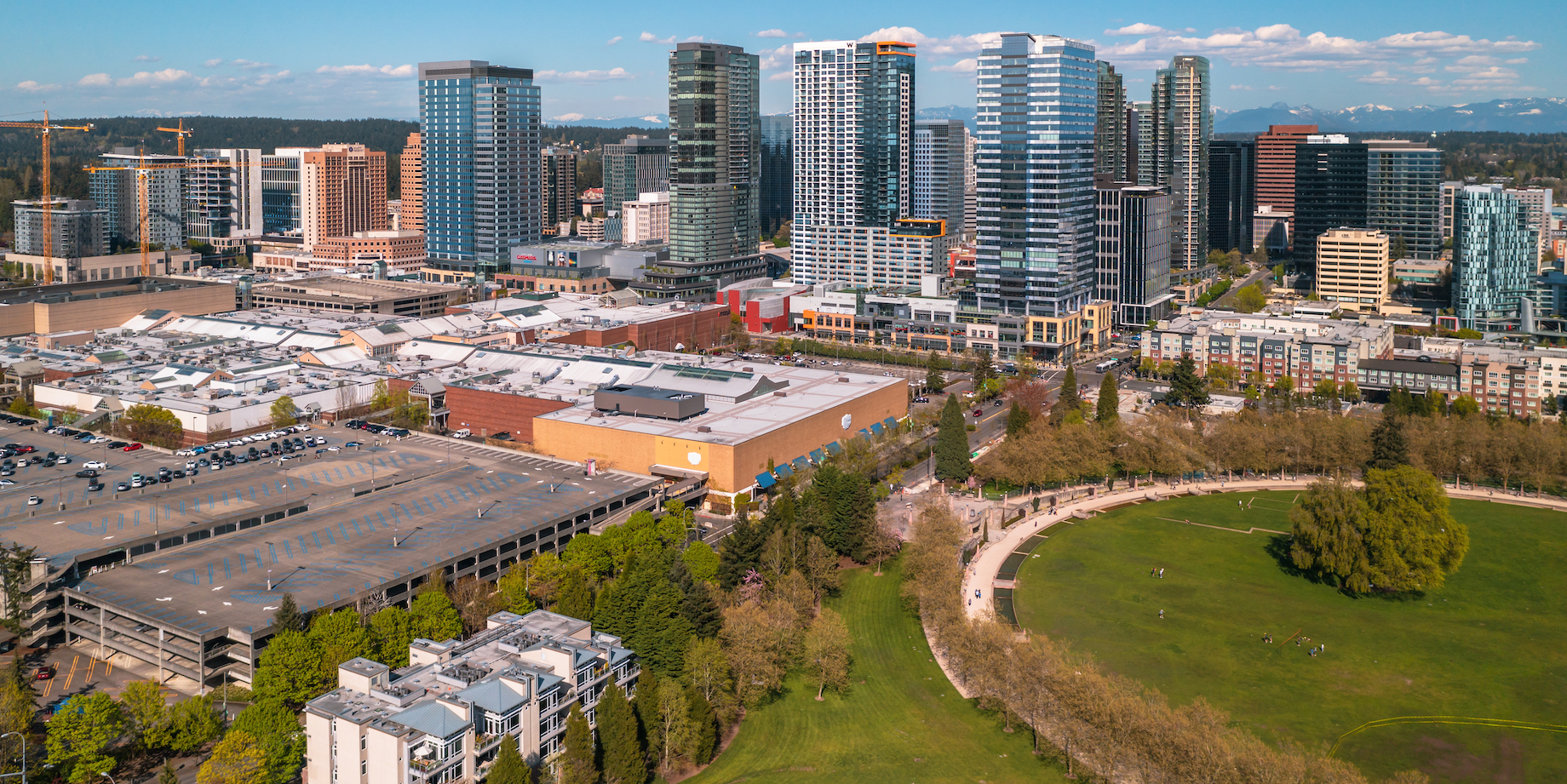
The Bellevue Collection, looking north from Bellevue Downtown Park
Developed in phases, the complex boasts:
- 200 shops
- 50 dining and nightlife venues
- 30 quick-service restaurants and cafes
- 1.7 million square feet of class-A office
- 1,315 guestrooms at three hotels
- 360 luxury homes
- 12,500 parking spaces, which are free for retail customers
Skybridges and tunnels on the 51-acre site keep traffic circulating among the properties, which bring in 30 million visitors and more than $1 billion annually.
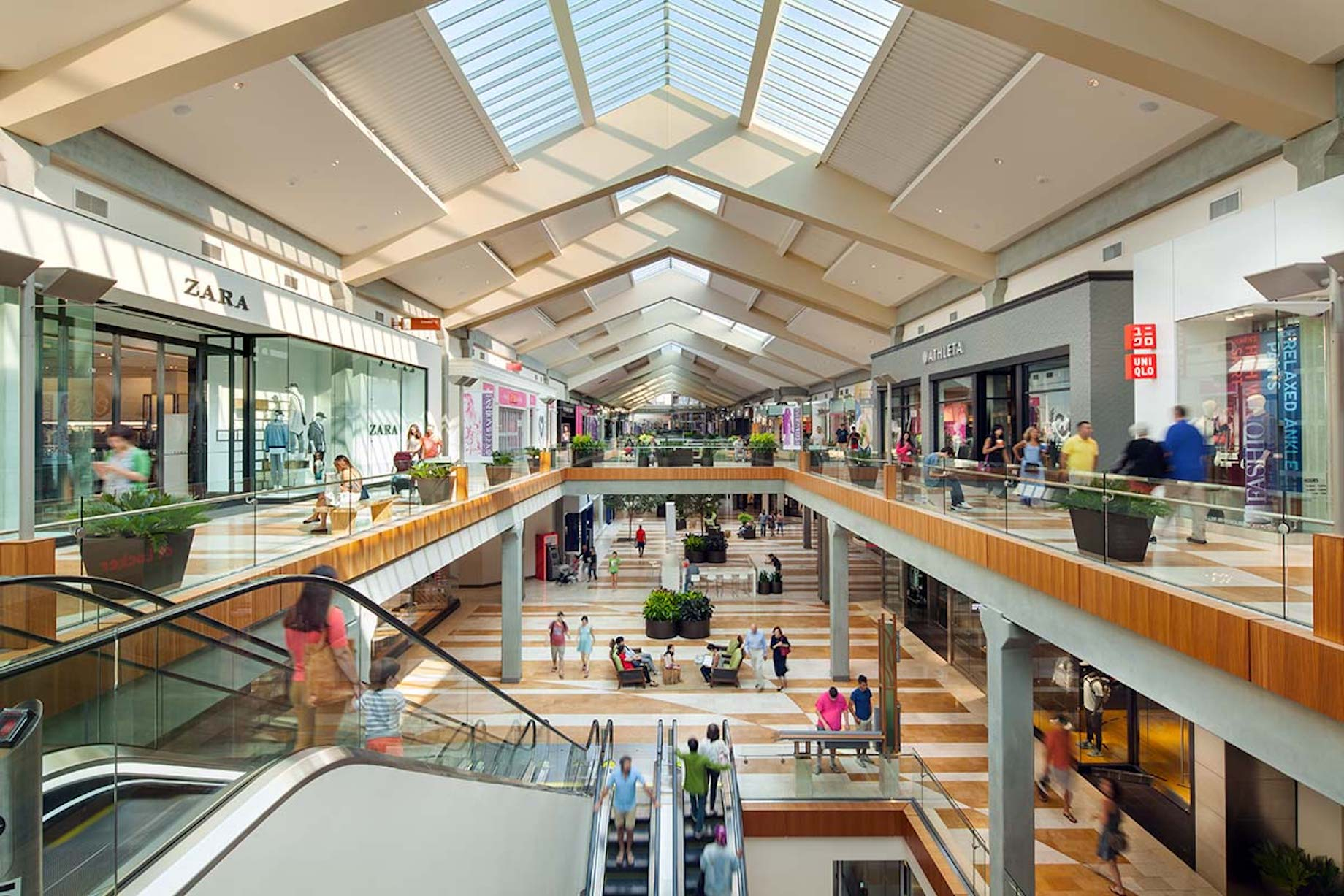
Tenants at the 1.3 million-square-foot Bellevue Square include Nordstrom, Apple, Tesla, Peloton, Hugo Boss, Tiffany & Co., Kate Spade New York, Burberry and Max Mara, along with digitally native retailers like Amazon, Warby Parker and Blue Nile. Photo credit: Mark Silverstein
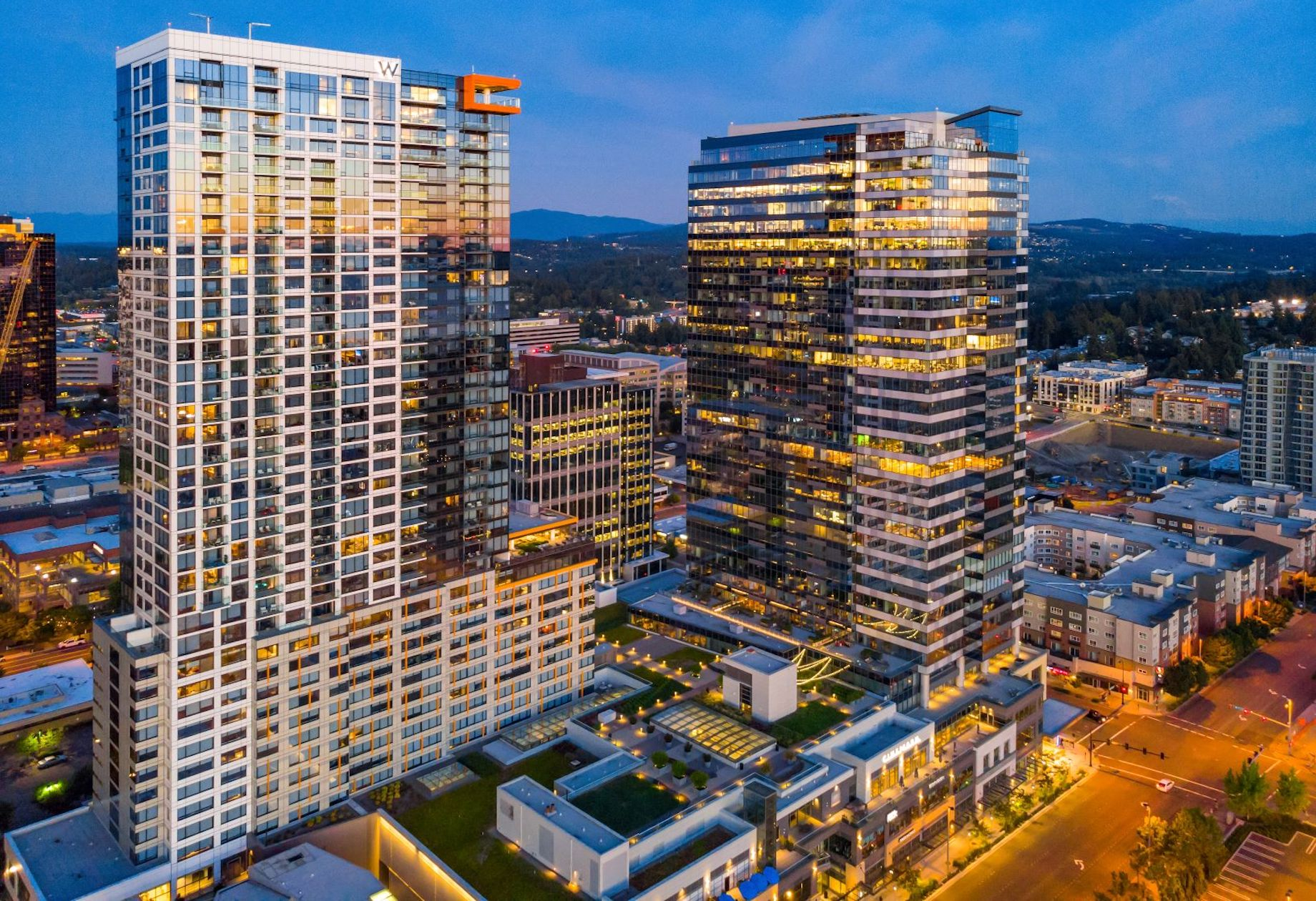
Lincoln Square South, above, includes the W Bellevue hotel, 2 Lincoln Tower luxury apartment building and the 400 Lincoln Square office tower. Lincoln Square also boasts The Westin Bellevue hotel, theaters, restaurants and nightlife venues. Photo credit: Baylee Reinert, Clarity Northwest
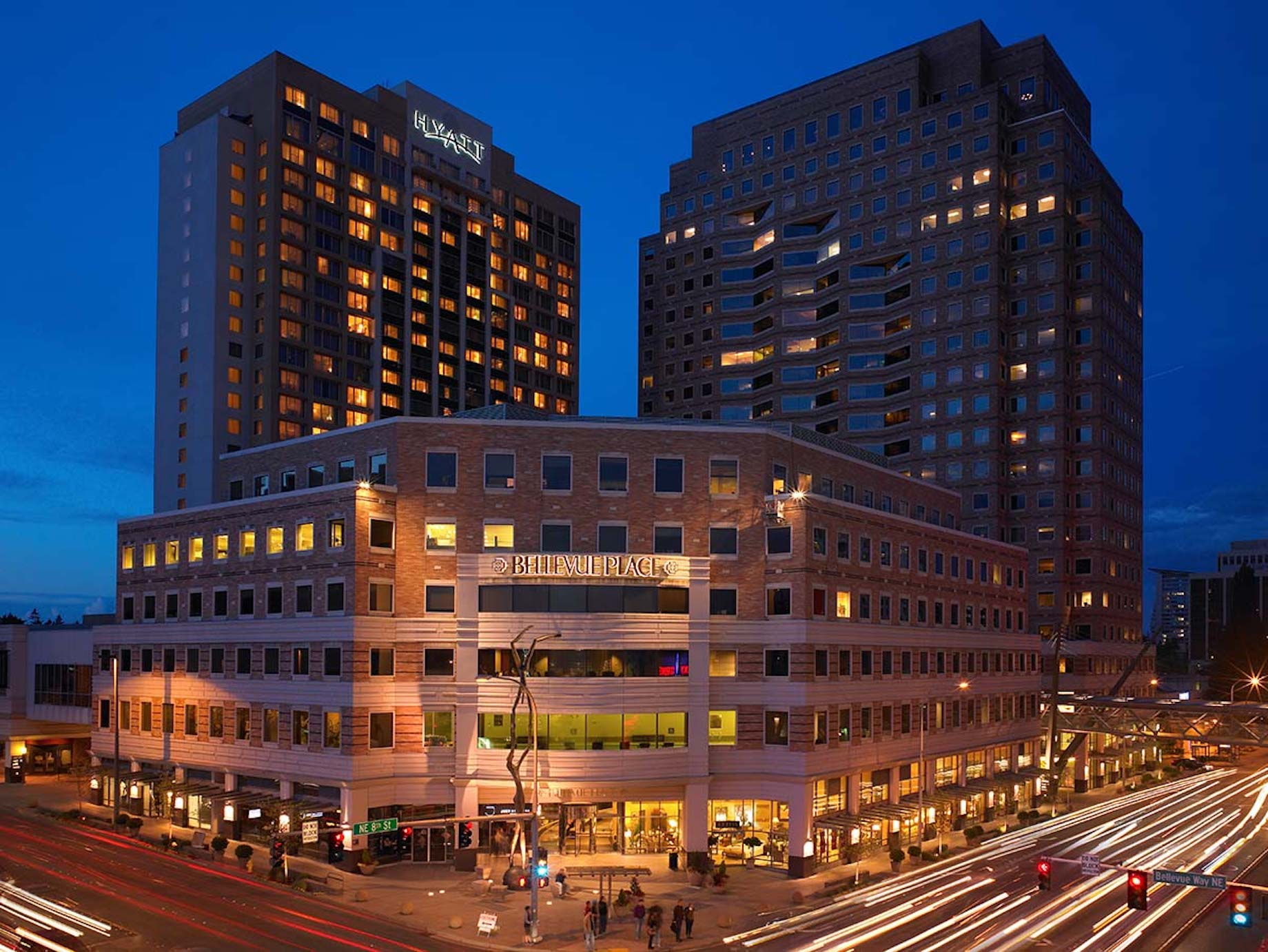
Bellevue Place opened in 1989. Its 21-floor office tower provides “stunning panoramic views of Puget Sound,” and its top-floor Daniel’s Broiler steakhouse is “the highest-grossing restaurant east of Seattle,” according to Kemper Development Co.'s website. Photo credit: Kemper Development Co.
In explaining the success of The Bellevue Collection and its owner, Kemper Development Co., Freeman starts by pointing to his grandfather’s decision in the late 1920s to buy that patch of land. As World War II wound down, Freeman’s father saw that car-friendly shopping centers in the ’burbs were a good bet. “He drove all over the United States to visit every shopping center in America — there were probably 25 or 30 at that time — until he found one in suburban Dallas that was a fit,” Freeman recalled. “The owner said to him, ‘You don’t compete with us. You’re 2,000 miles away. Would you like a set of plans?’”
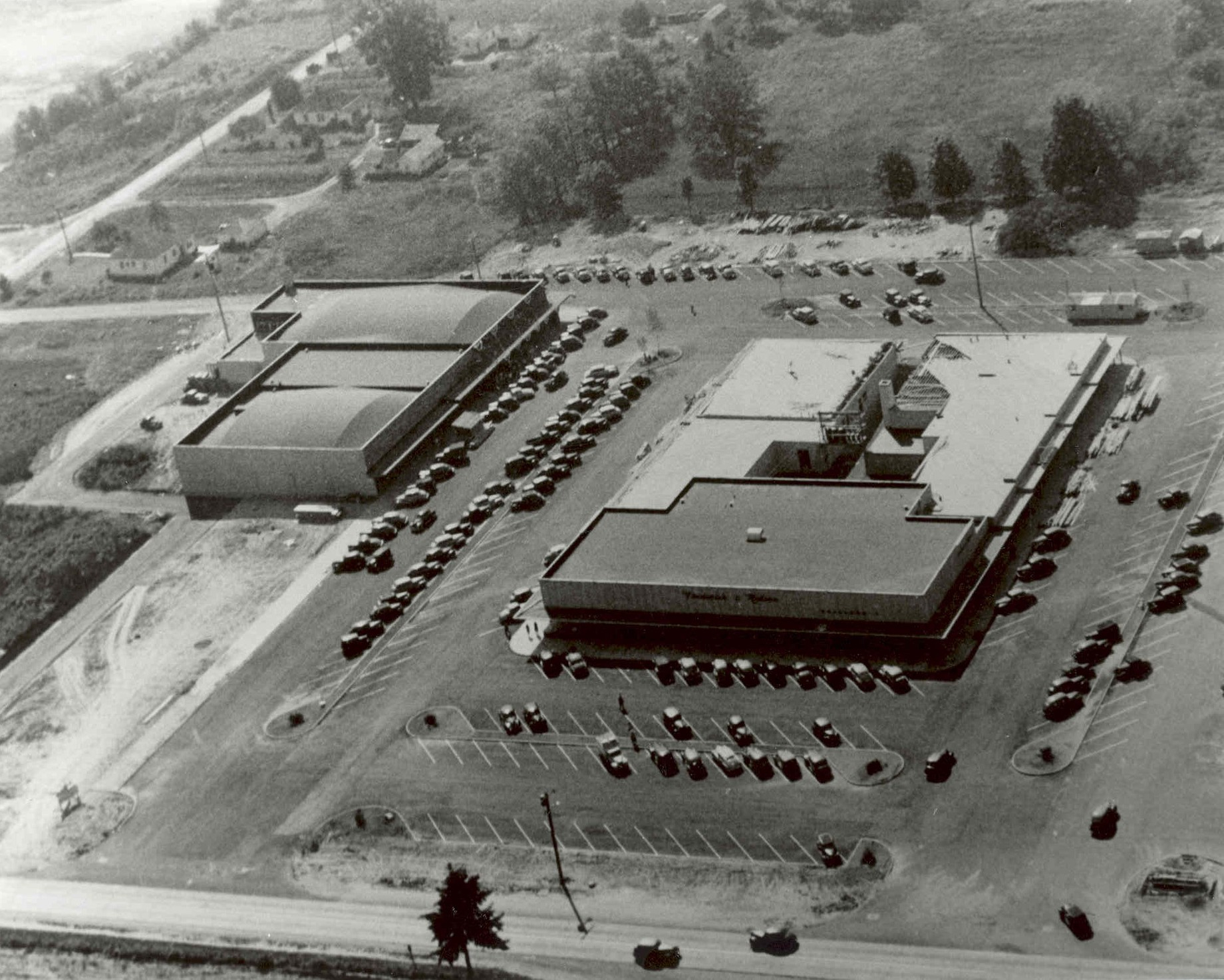
Bellevue Shopping Square in 1947
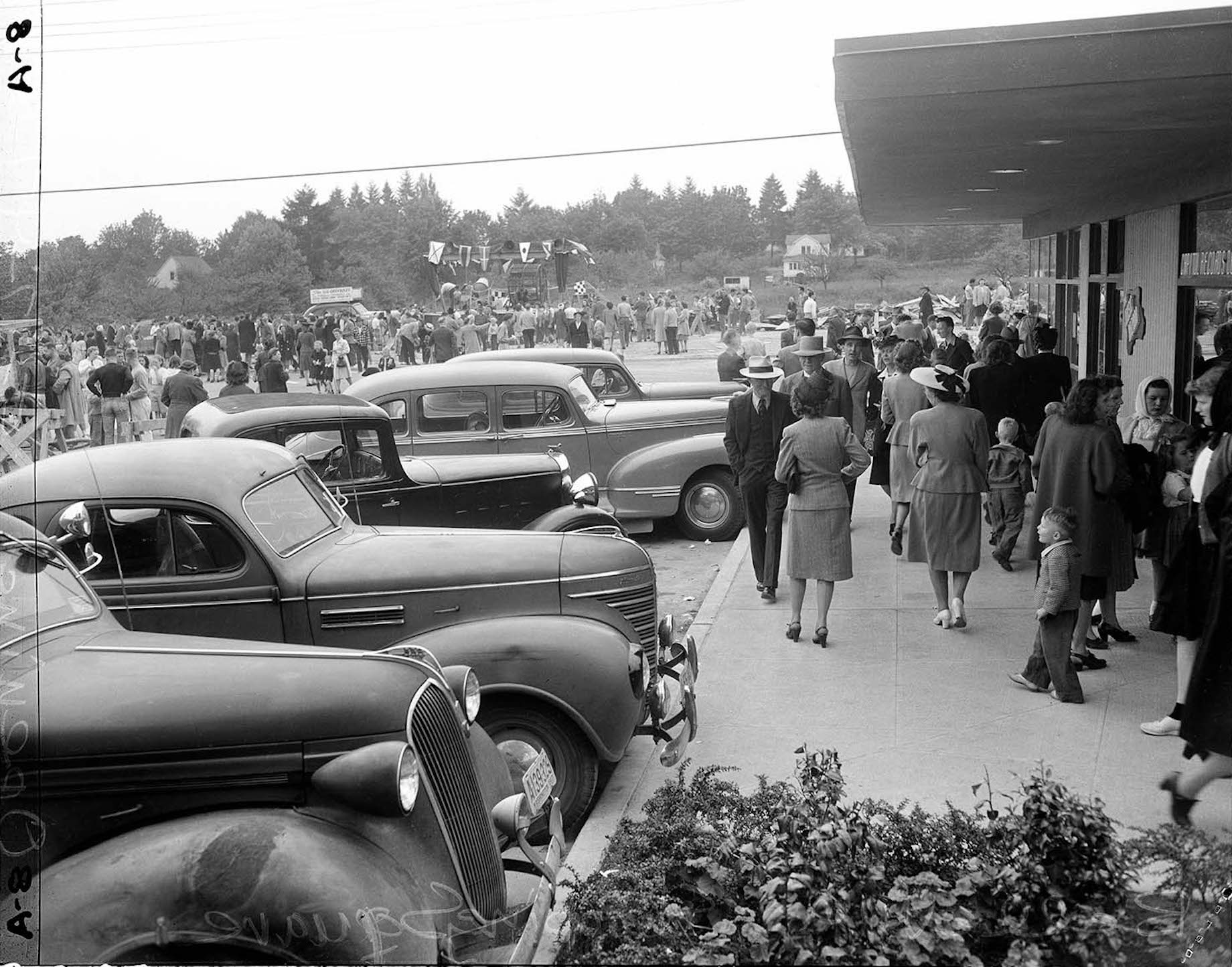
The Aug. 20, 1946 grand opening of Bellevue Shopping Square featured an orchestra, searchlights, a live radio broadcast and hundreds of well-dressed visitors. Photo credit: MOHAI
The open-air property started with 16 tenants. Freeman’s father had expanded the roster to 20 by the end of 1946, the year it opened, and at the end of the 1950s, the center had 45 retailers. Freeman joined the business in 1966. By the end of that decade, the tenant lineup included Frederick & Nelson, JCPenney, Nordstrom Best, restaurants Clark’s Crabapple and Kandy Kane, the 550-seat Belle-Vue Theatre and a J.J. Newberry five-and-dime, to name a few. Convenience-oriented Thompson’s Drugs, Pacific National Bank and A&P grocer rounded out the mix.
Malls and mixed-use: 1980s-1990s
During the mall-building heyday of the 1980s, Freeman converted the original one-level open-air center into an enclosed, super-regional mall called Bellevue Square. The plan called for European-inspired flourishes like a center court, church clock with a working bell and pop-out storefronts intended to create a jewel-box effect.
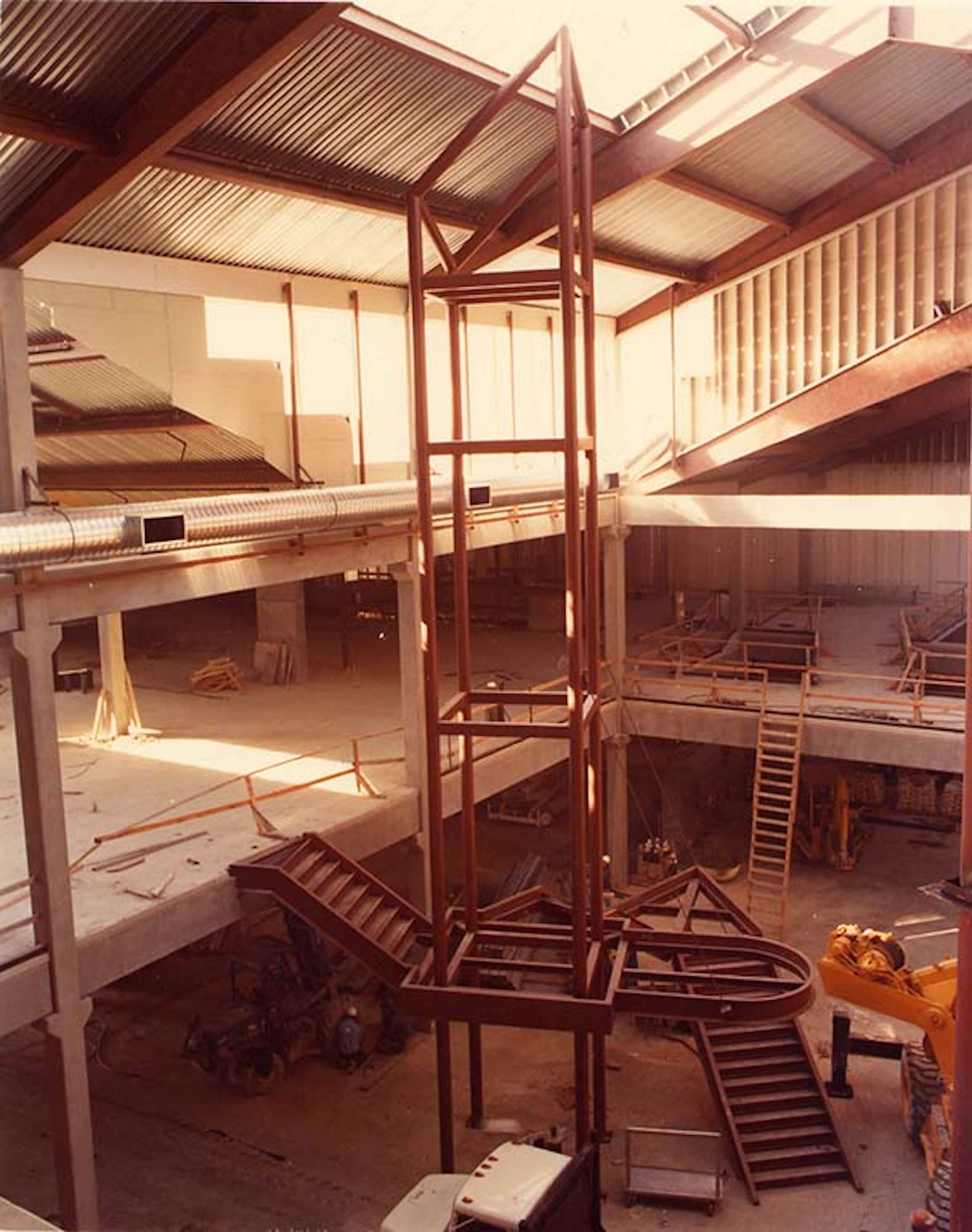
Bellevue Square Center Court under construction in the early 1980s
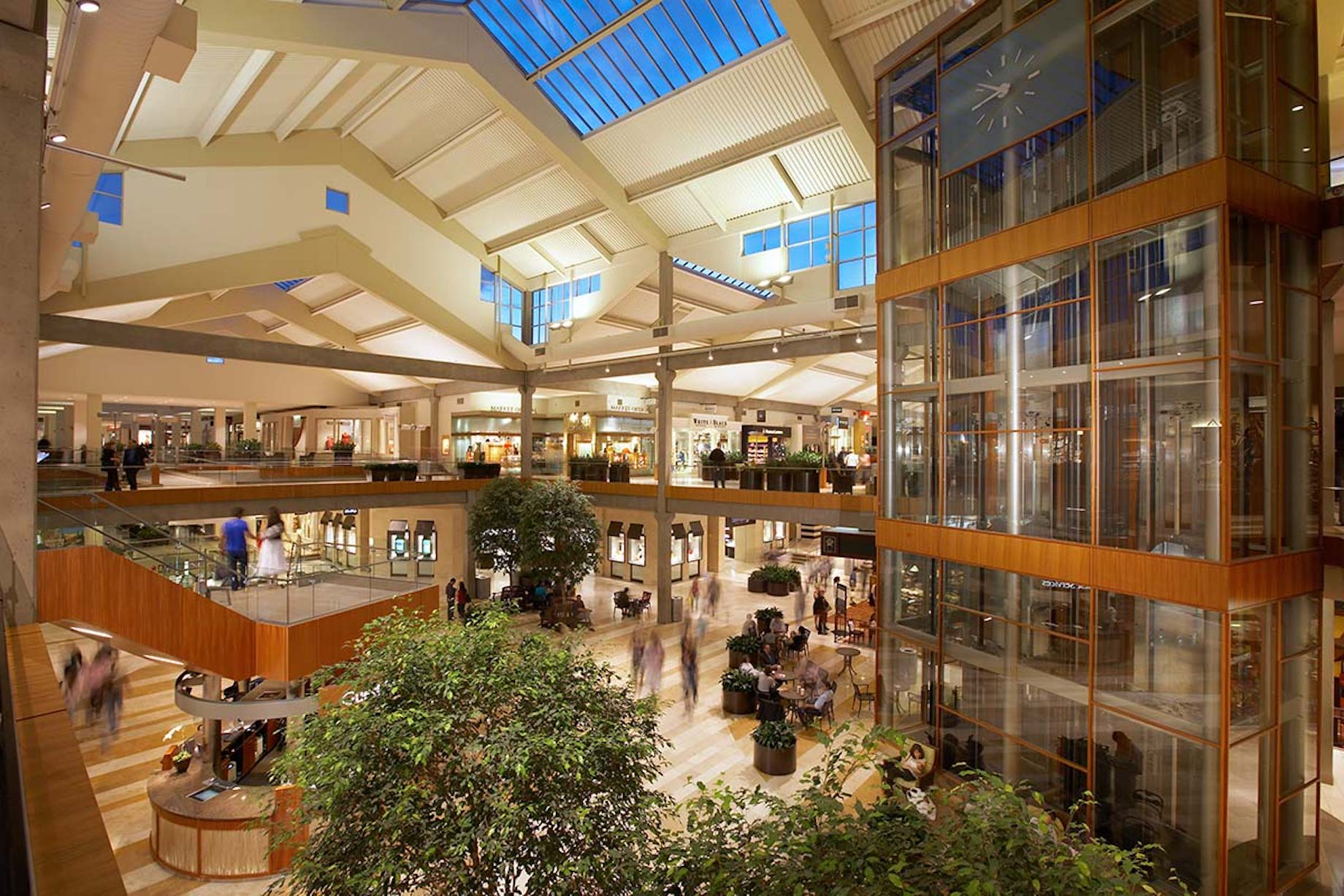
Bellevue Square Center Court in 2019. Photo credit: Mark Silverstein
A multilevel mall was a gamble at the time, said Robert Spector, author of the 2007 book Generations: Kemper Freeman, Jr. and the Freeman Family. Most regional malls up to that time covered enormous expanses of land and were one level throughout, Spector noted. “Kemper was working with a pretty small footprint — it was about 35 acres — and so he had to have a second floor, but everyone was telling him that second floors don’t make any money because nobody wants to go there. He knew that all the stores had to work for the mall to pencil out.”
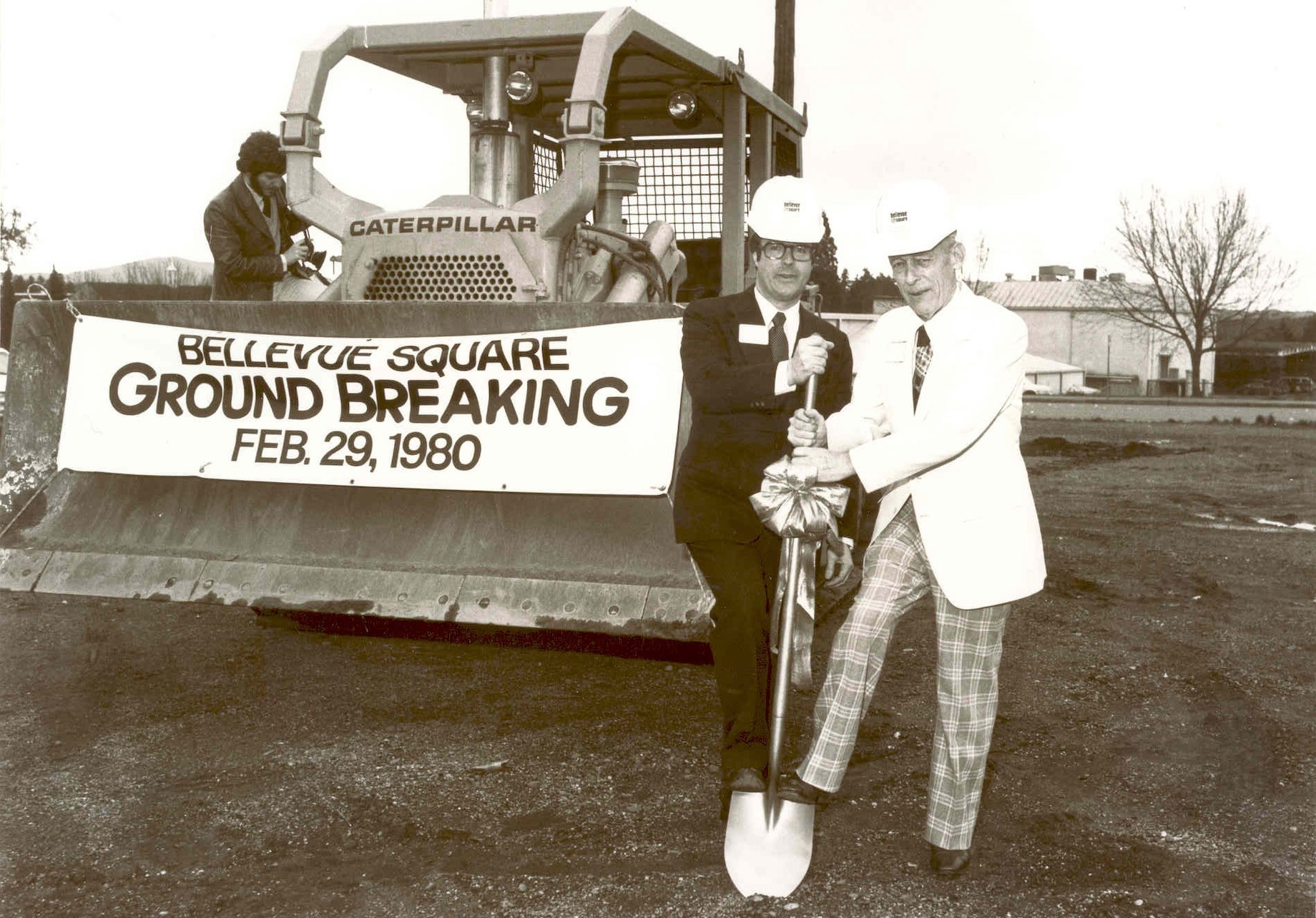
Kemper Freeman Jr. and his father at the redevelopment groundbreaking. Photo credit: Brandt Photography
Freeman’s architect proposed a site plan inspired by the Japanese game pachinko, a vertical pinball machine in which steel balls plop from top to bottom following the force of gravity. When people walked from the parking garage into Bellevue Square, they started their shopping trip on the second floor. “The architect told me that people pachinko down, not up,” Freeman explained. “It was just exactly as he said. Our second floor has outperformed the first floor since the day we opened.”
The later addition of skybridges from adjacent projects meant that the second, third and fourth levels of the parking deck all fed the second floor of the mall, further boosting traffic. Today, that second floor includes the Apple Store, Williams Sonoma, Pottery Barn, Banana Republic, Uniqlo and Zara.
The newly enclosed Bellevue Square opened in 1985 with Seattle-based Bon Marche as the fourth department store. Soon after, Freeman added uses to the multi-acre site. He opened mixed-use Bellevue Place in 1989. In addition to its 21-floor office tower, that project includes a 733-room Hyatt Regency Bellevue hotel, along with boutiques, service tenants and eating and drinking places.
The idea was for the mall to drive traffic to the mixed-use project. However, Freeman learned that business flowed in both directions. “When you build great mixed-use across the street from your shopping center, it is a catalyst for the shopping center, too. That sounds simple, but many people in the industry don’t appreciate how much that kind of synergy translates to the whole community.”
Reinventions: 1990s-2000s
Freeman responded in the 1990s to forces that would continue to push and pull at the shopping center industry for decades to come, including the need to backfill vacant department stores. When Frederick & Nelson went bankrupt in 1992, the developer brought in 50 specialty stores to fill the three-level, 175,000-square-foot space. They included FAO Schwarz, Warner Bros. Studio Store, Museum Store, Montblanc, Chico’s and J.Crew.
The next evolution came in 2001, when KDC brought in Crate & Barrel, along with a raft of new restaurants, as part of a 300,000-square-foot expansion. “The corner building with Crate & Barrel was significant because it was the first streetfront retail and restaurant expansion at Bellevue Square,” said Bellevue Collection vice president of marketing Jennifer Leavitt. “Prior to this, it was very interior facing. This was the precursor to really developing a walkable, restaurant-filled street experience along Bellevue Way.” A multilevel gathering space called The Lodge was part of the upgrade. With timber roof and rafters, it included a 65-foot stone fireplace. “It became a social gathering space separate from the interior of the center,” Leavitt noted.
Freeman doubled down on mixed-use in the mid-2000s by taking over a faltering project across the street from the mall. “Lincoln Square had been started by a Canadian developer who ran out of money and went bankrupt,” Spector explained. “Some of it had already been built, like the foundations and the beginning of the parking garage. Kemper went in and, rather than replicating Bellevue Square, looked for different retailers, especially home furnishings retailers. He also built skybridges. It does rain around here.”
Today, Lincoln Square North and South total 4 million square feet with two hotels and 480,000 square feet of retail, dining and entertainment. The mix includes The Container Store, AT&T, Nordstrom Rack, SoulCycle, TruFusion, STK Steakhouse, Taiwanese/Chinese restaurant Din Tai Fung and Brazilian steakhouse Fogo de Chao. Lincoln Square has two movie theaters, a bowling/arcade venue and the Forum Social House, which offers a bar, restaurant, Topgolf Swing Suite, a dance club and miniature golf courses.
KDC also invested $30 million to renovate Bellevue Square in 2008.
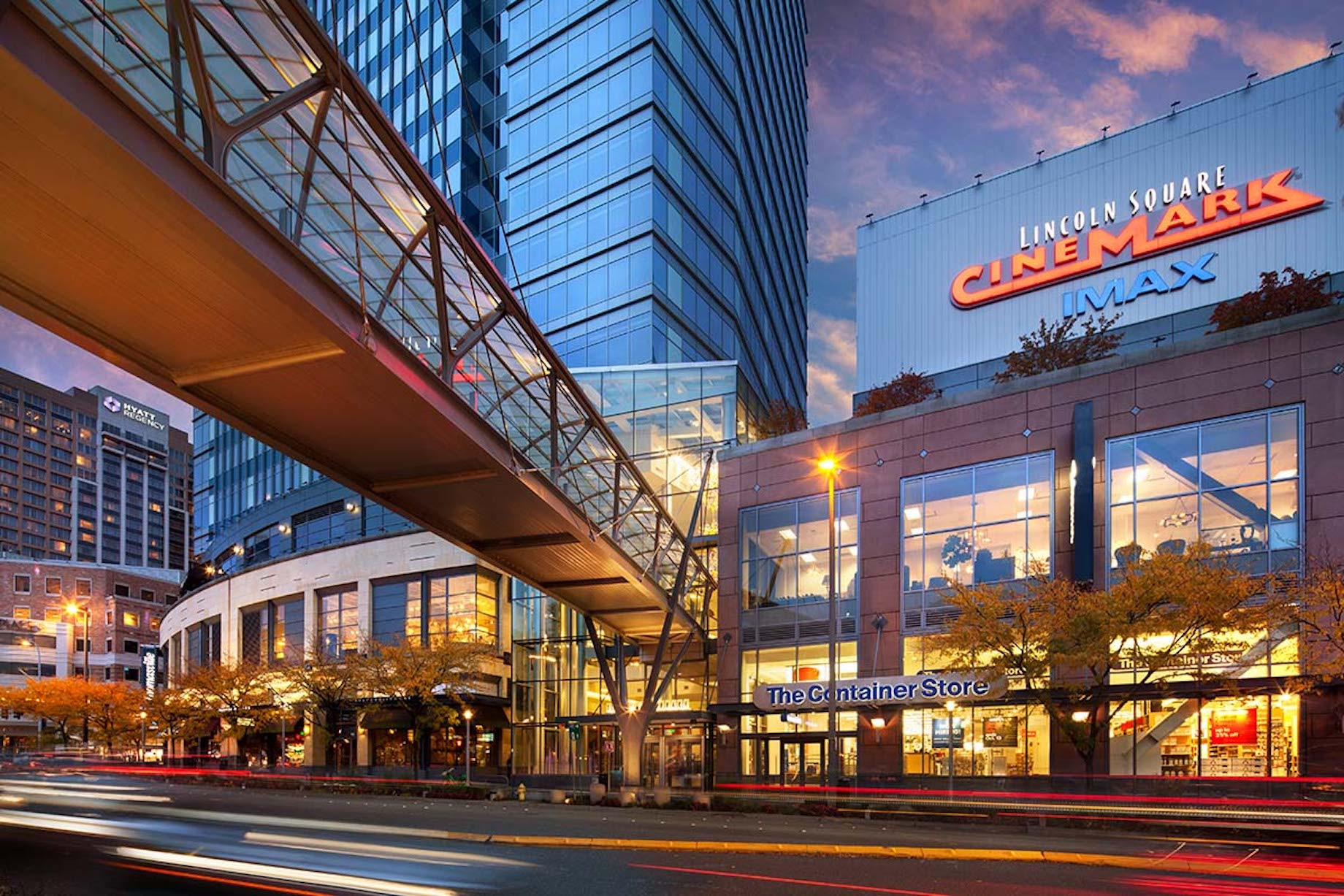
Bellevue Collection’s first skybridge, to Lincoln Square North. Photo credit: Mark Silverstein
An American story
The story of The Bellevue Collection is interwoven with American retail history, from the postwar strip mall boom to the regional mall craze of the ’80s to today’s focus on live-work-play. To be sure, factors beyond KDC’s control, such as the launch of Microsoft and Amazon in its backyard, supported the success of The Bellevue Collection, Spector said. “Kemper will tell you that he was fortunate in the fact that, back in 1986, this little software company called Microsoft set up its headquarters in Redmond.”
About 124,000 millionaire households now sit within 10 miles of The Bellevue Collection, according to Freeman. “We have 15 million square feet of class-A office buildings either under construction or submitted for permitting within downtown Bellevue alone.” The video game business is a major employer, as the likes of Valve, Bungie, Pokemon and Unity maintain Bellevue headquarters or offices. Salesforce, Alibaba Group and Huawei also operate in the city, and Microsoft has an office at Lincoln Square North.
The experience of KDC’s executive team, as Leavitt sees it, also contributed to the complex’s success. In addition to Freeman as chairman and CEO, the C-suite includes president Jim Melby, CFO Paul Cronkite and senior vice president of operations Matt Van Der Peet. “Jim Melby and I have both been with KDC for over 30 years, as well as multiple decades for many members of this team,” Leavitt said.
‘Parking geek’
Freeman and KDC adapted to or anticipated major retail trends, Spector said. By reinventing assets as needed, they created environments that appealed to all those millionaires and out-of-town guests. Freeman is famous for paying close attention to details, the author noted. “For example, Kemper is a parking geek. I have listened to him talk about parking and the psychology of parking to the point where even I started to get fascinated about parking.”
Bellevue Square’s parking deck, for instance, was designed to make it easy for drivers to come and go. “If you have a parking space with a single line, what happens inevitably is that somebody will park over that line,” Spector said. “That affects all the other cars. Bellevue Square has double lines, and the spaces are angled so it’s easier to get in. … For Kemper, it’s all about the little details and how they affect the experience.”
Paying such close attention to property-level details would have been more difficult, Spector opined, had Freeman, who lives in a high-rise at The Bellevue Collection, tried to open dozens of malls. “Kemper will walk around these properties looking at all those details, just like a store owner will walk around his shop,” Spector said. “He is virtually living above the store.”
Independence born of private ownership is another part of the equation, although Freeman admitted to doubting this approach back when publicly traded mall REITs were so dominant. “Most of my would-be competitors were REITs, and I can remember thinking, ‘How are we, a single-mall owner, ever going to survive?’ I thought we would be lucky if we could just stay open.” Over the years, though, Freeman increasingly fielded calls from REIT execs wanting to acquire The Bellevue Collection. “They have all come one by one trying to buy us out.”
Community focus
Retailer Katherine De Stephano has had a front-row seat for KDC’s stewardship of Bellevue Square for 21 years. She opened a Helly Hansen store at the mall in 2000, sold it and then in 2011 launched outdoor apparel retailer Escape Outdoors. De Stephano finds that her shoppers often have walked to the mall from The Bellevue Collection’s residences, hotels and offices. “Having all of these different uses within walking distance truly does create synergy. We see and experience it every day.”
Freeman’s personal involvement is evident to retailers, too. The developer rarely misses merchants’ association meetings and occasionally can be seen strolling the property. “It’s a way for him to have a full read on what is transpiring,” De Stephano said. “One Saturday afternoon, I was walking to get a coffee and I looked up and there was Kemper casually dressed wearing a ball cap, vest and jeans.”
As De Stephano sees it, giving back also keeps The Bellevue Collection connected to the community. The Freeman family and KDC support local nonprofits and arts organizations and stage events like Fourth of July fireworks and celebrations of Diwali and the Lunar New Year, she said. “With Fashion Week, for example, ticket sales are tied back and donated to local and regional charities.”
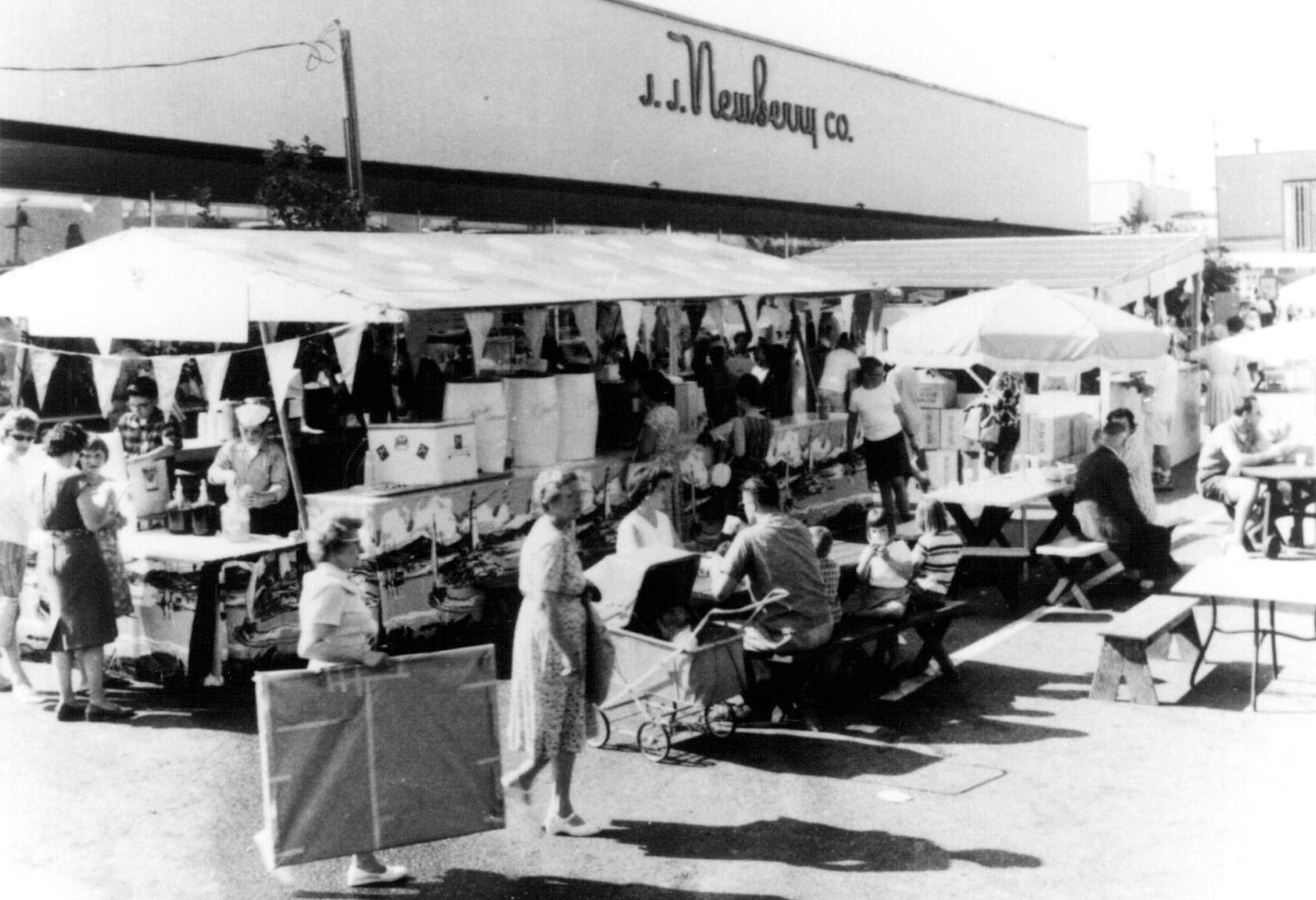
An early arts fair at Bellevue Square
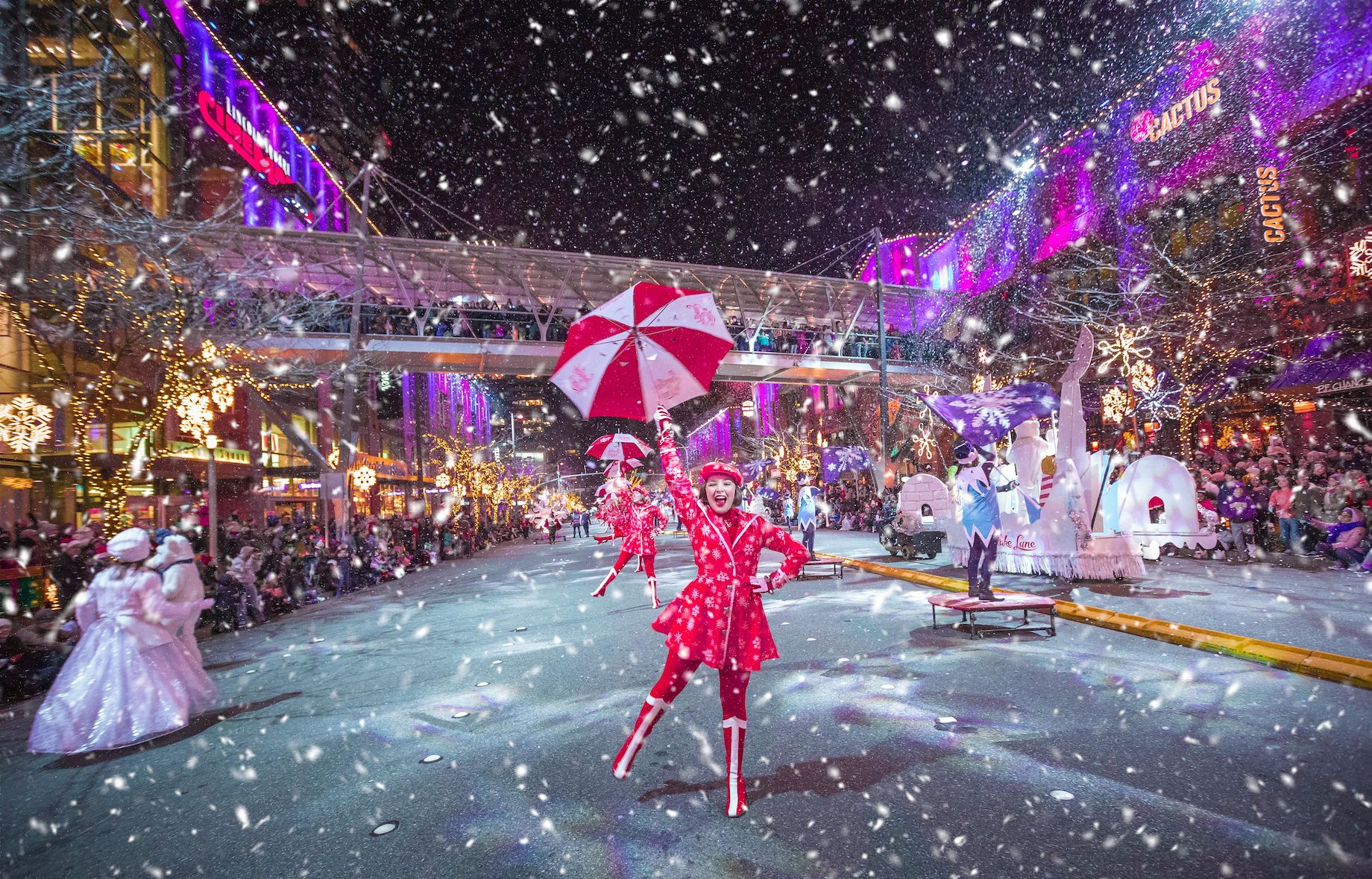
Kemper Development Co.’s annual Snowflake Lane nightly holiday show is in its 17th year and attracts more than 400,000 guests each year.
In keeping with that focus, KDC mounted an early response to COVID-19. The first widely reported U.S. case was in Snohomish County, near Seattle, in January 2020. Once lockdowns were imposed, KDC launched a program called Do Good with Delivery to help local restaurants and food-insecure children and families. Nonprofit Bellevue LifeSpring, a tenant for the property’s full 75 years, used donated portions of sales at participating restaurants to buy and deliver meals. “Our initial goal, which seemed lofty at the time, was to do maybe 10,000 meals,” Leavitt said during an ICSC Connect Virtual Series featuring Gold winners of ICSC’s annual MAXI Awards. “We were actually able to fill over 28,000 takeout and delivery meal orders, which then meant that a total of 56,650 meals were donated to Bellevue LifeSpring for local families and kids.”
In reflecting on his success, Freeman, who was still in high school when he went to his first ICSC meetings and served as ICSC chairman in 1994 and 1995, also pointed to the benefits of swapping ideas with colleagues and mentors. “The older you get, the more you realize that there are things you don’t know.” One of those mentors was legendary U.S. developer Ernie Hahn, who once had a discussion with Freeman about whether it was necessary to own a huge portfolio of malls. “Ernie was a mentor forever, just one of the great people in the business and a former ICSC chairman who built more than 50 centers,” Freeman said. “He says to me: ‘Kemper, all you need is one good one.’ It really is that simple.”
By Joel Groover
Contributor, Commerce + Communities Today